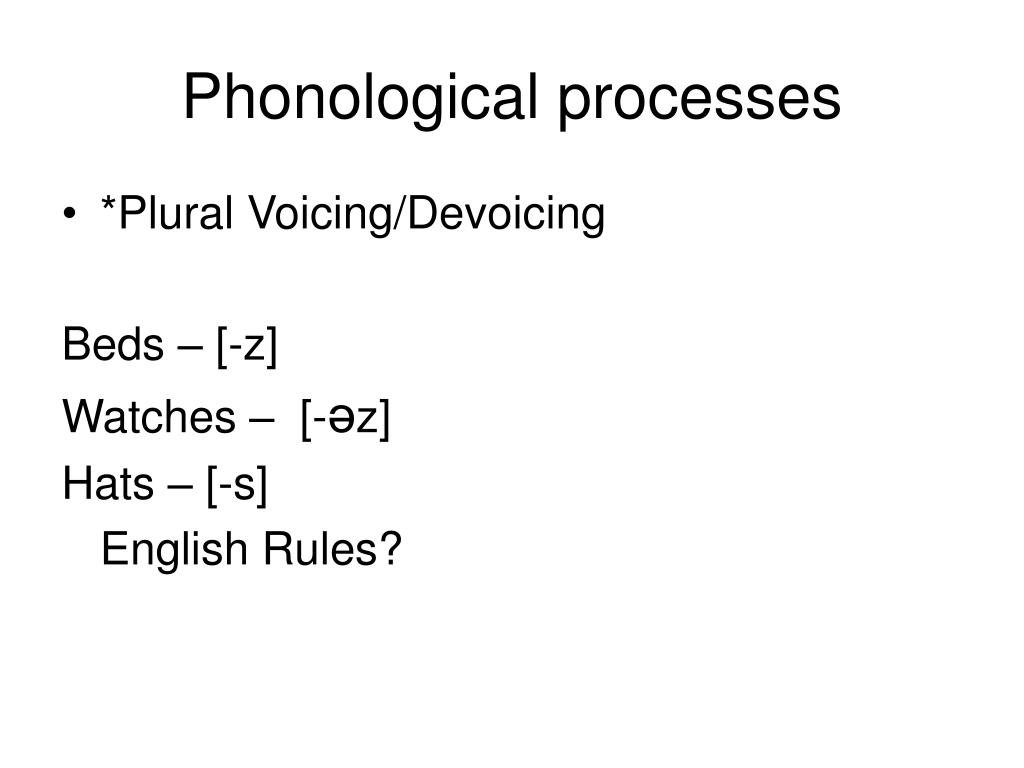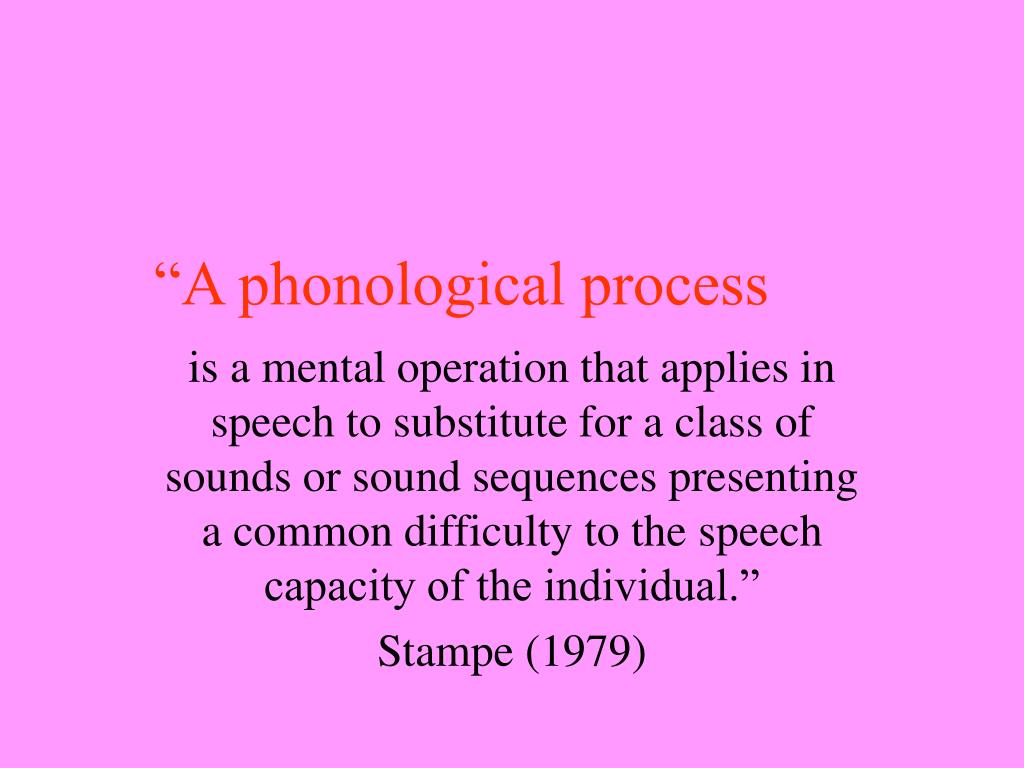

For example, the child might say /toe/ for /go/. This is when sounds that should be created in the back of the mouth, are made in the front. This is consistent with more severe phonological delays.įronting is the exact opposite of backing. For example, kids might substitute the word /dog/ with the word /kog/. Substitutions – These are speech errors where kids replace the correct sounds with different sounds, making the word unintelligible.īacking is when kids replace sounds created in the back of the mouth with the sounds that should be produced in the front of the mouth. We speech therapists would say that his/her speech shows a delay because that process typically ends in children by the age of 3.ĭifferent Types of Phonological Processes Type 1: Substitutions For example, a child with a phonological disorder uses the phonological process of “reduplication,” like saying “wawa” for “water” by the age of 4. Young children form these patterns because they do not yet have the skills to produce the words accurately and clearly.įor example, you may hear children say the word, “plane,” but it comes out at “pane.” They may also delete sounds in the word, such as “nana” for “banana.” There are many different patterns that can occur in a child’s speech, which is “normal” while their language develops.Ī phonological disorder occurs when the patterns the child uses exist beyond the period of time that “typical” children have stopped using them, or when the errors are even more different than expected.

Typically, there are speech patterns that developing children use when they are learning speech sounds. Definition and Explanation of Phonological Processes


 0 kommentar(er)
0 kommentar(er)
